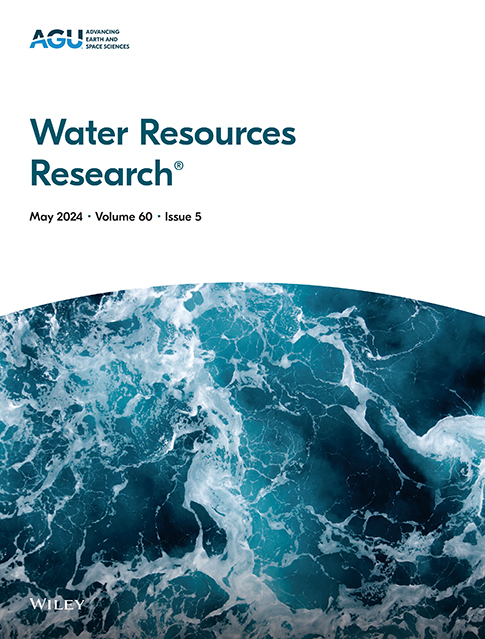Can Typical Land Surface Model Parameterizations Support the Expected Soil Moisture Assimilation Efficiency?
IF 4.6
1区 地球科学
Q2 ENVIRONMENTAL SCIENCES
引用次数: 0
Abstract
Remote sensing (RS) soil moisture retrievals are frequently assimilated into land surface models (LSMs) to enhance model estimates. However, soil moisture data assimilation (DA) efficiency is highly model-dependent, making it imperative to investigate whether current LSMs can achieve expected DA efficiencies and identify potential model limitations for DA. Here, we examine soil moisture DA efficiency based on a typical LSM by benchmarking it against a reference soil moisture merging scheme (i.e., assigning weights to combine multiple products into a single one). Both the merged and DA soil moisture estimates are comparable since they are based on identical error estimation theory and the same RS soil moisture data sets. In theory, the DA soil moisture estimates should be superior to the merged results—since DA can characterize the temporal variation of model error and propagate DA benefits into subsequent forecast steps. However, ground-based validation results indicate that DA soil moisture performs worse than simply merged results in regions where the LSM is less precise than RS retrievals. Further combing synthetic experiment, we confirm that the unexpected DA results are primarily attributable to land parameterization uncertainty, which leads to an unrealistic representation of soil moisture events (e.g., dry-downs) and significantly hampers the DA application. Given this, soil moisture DA is likely to remain suboptimal in achieving its desired goals. Therefore, this study emphasizes the urgency and necessity of reducing model parameterization uncertainty in land DA systems.典型的地表模式参数化能否支持预期的土壤水分同化效率?
遥感反演的土壤水分常常被同化到陆地表面模型中,以提高模型的估计精度。然而,土壤水分数据同化(DA)效率高度依赖于模型,因此有必要研究当前的lsm是否能够达到预期的DA效率,并识别DA的潜在模型局限性。在这里,我们通过参考土壤水分合并方案(即分配权重将多个产品合并为一个产品)对基于典型LSM的土壤水分数据分析效率进行了测试。合并后的土壤湿度估计值与数据同化后的土壤湿度估计值具有可比性,因为它们基于相同的误差估计理论和相同的RS土壤湿度数据集。从理论上讲,数据分析估算的土壤湿度应该优于合并的结果,因为数据分析可以表征模型误差的时间变化,并将数据分析的好处传播到后续的预测步骤中。然而,基于地面的验证结果表明,在LSM精度低于RS的地区,DA的土壤湿度表现不如简单合并的结果。进一步结合综合实验,我们确认了非预期的数据处理结果主要归因于土地参数化的不确定性,这导致了对土壤水分事件(如干干)的不现实表示,严重阻碍了数据处理的应用。鉴于此,土壤水分数据分析在实现其预期目标方面可能仍然不是最优的。因此,本研究强调了降低土地数据分析系统模型参数化不确定性的紧迫性和必要性。
本文章由计算机程序翻译,如有差异,请以英文原文为准。
求助全文
约1分钟内获得全文
求助全文
来源期刊

Water Resources Research
环境科学-湖沼学
CiteScore
8.80
自引率
13.00%
发文量
599
审稿时长
3.5 months
期刊介绍:
Water Resources Research (WRR) is an interdisciplinary journal that focuses on hydrology and water resources. It publishes original research in the natural and social sciences of water. It emphasizes the role of water in the Earth system, including physical, chemical, biological, and ecological processes in water resources research and management, including social, policy, and public health implications. It encompasses observational, experimental, theoretical, analytical, numerical, and data-driven approaches that advance the science of water and its management. Submissions are evaluated for their novelty, accuracy, significance, and broader implications of the findings.
 求助内容:
求助内容: 应助结果提醒方式:
应助结果提醒方式:


